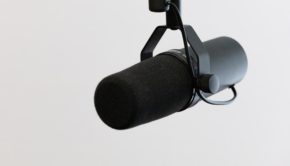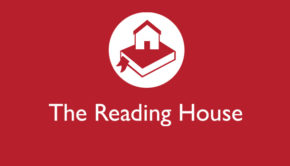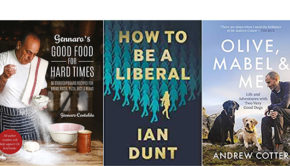Listen up
Digital technology has sparked a revolution in the way publishers distribute their written content. But could it have an even greater impact on the way audiobooks are sold?
Audio is certainly a booming market. Hard data on the sector is tricky to find—partly because one of the biggest operators, Amazon’s Audible, does not share its figures. But IBIS World independent research from IBIS World estimates that the UK audio market was worth £91m last year, and calculates that annual growth over the last five years has averaged 6.2%—way above most estimates of growth in print and ebook sales. When The Publishers Association surveyed the market, it went even further and said the audiobook market had doubled in the last five years. “Audio is the fastest growing genre in publishing,” Orion’s audio publisher Pandora White The Bookseller last year. “In my 20 years [in the industry] I never thought I would say that.”
It is obvious where the growth has come from: downloads. They have completely transformed the way audiobooks are sold and enjoyed, allowing consumers to buy from thousands of audio options in seconds. Mobile devices, especially smartphones, enable audio content to be acquired and accessed wherever their users happen to be. Buying, storing, listening and pausing is effortless, and this is a sector that is even better suited to digital technology than written content. It can even take content into situations where books would not suit—like driving a car, running at the gym or doing the washing-up. As Ali Muirden of Creative Content put it at a session on audiobooks at the IPG’s recent Annual Spring Conference: “Audiobooks are ideal for any time when your hands are busy but your mind is free to roam.”
So far, the digital market has been dominated by big players. On the platform side, Audible is the market leader by a distance—it now hosts some 200,000 titles, and worldwide its customers listened to 1.6 billion hours of audio content last year. Apple’s iTunes is another big gateway for purchasers.
Among publishers, the large majority of the market has been taken by international heavyweights with large pools of titles that are suitable for audio adaptation, like star-name generic fiction, and the resources to pay well-known names to narrate them. And these leading publishers are certainly taking the market more and more seriously. Most now have their own in-house recording studios and publish their audiobooks simultaneously with print and ebooks. The biggest audiobook publisher of all, Penguin Random House, gave a clear sign of its ambition recently by creating a Standalone and unified Audio division.
Interestingly in the midst of all this, the physical audiobook market—CDs—remains solid, with sales of around £10m a year through Nielsen BookScan’s TCM. Retailers including Waterstones still carry reasonable audio ranges, and CDs for children—who are less likely to download from the internet and listen on mobile devices—are especially resilient.
But it is in digital where the barriers to entry to the audio market are falling, and in digital where opportunities are emerging for smaller and niche-oriented publishers to get a slice of the market. Production costs have fallen in recent years, and reliable audio quality can now be achieved with basic desktop packages. With CDs no longer required, manufacturing expenses have been removed.
Meanwhile, discoverability has dramatically improved. Just as the web has leveled the playing field for publishers seeking to get their ebooks found, so it has made it much easier for audio content to be hosted and distributed. Social media has proved a very good and cost-effective way to promote audio material, often in snippets or samples that are simple to produce. Audio portals like SoundCloud and AudioBoom have created more avenues for sharing material, and free podcasts have become a popular way to showcase content that can later be bought. In retail, while Audible dominates, other platforms are emerging too, like Storytel, and some libraries are experimenting with lending models.
In short, there have never been more ways to supply and consume audio content—and that is even before publishers start to think about ways to sell direct to consumers. Ecommerce websites Firsty can get audio content direct to buyers without a middleman: a significant opportunity for publishers in niches where buyers can be readily targeted.
Perhaps most encouragingly of all, digital audio seems to be appealing to a new generation of listeners. Audiobooks were once thought to be the preserve of older consumers—and the blind or visually impaired, for whom they have always been a lifeline. But at the IPG Conference, Ali Muirden Cited data from the US suggesting that the most common category of buyers is the 24 to 35 years-old range. If these young adults continue with this trend, and the digital-savvy children of today follow them, then the scope for audio in the years ahead is enormous.





